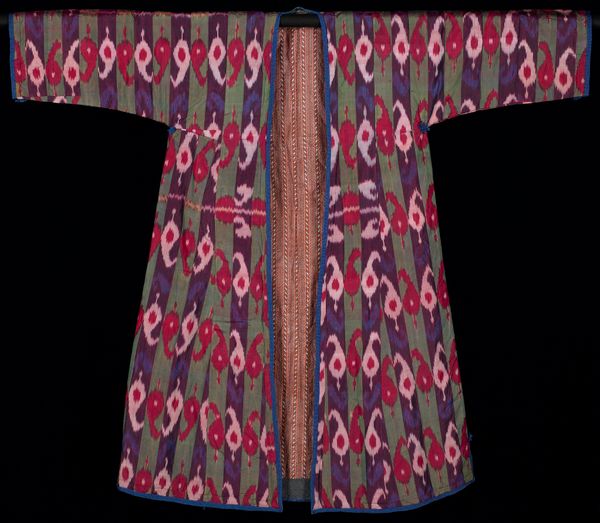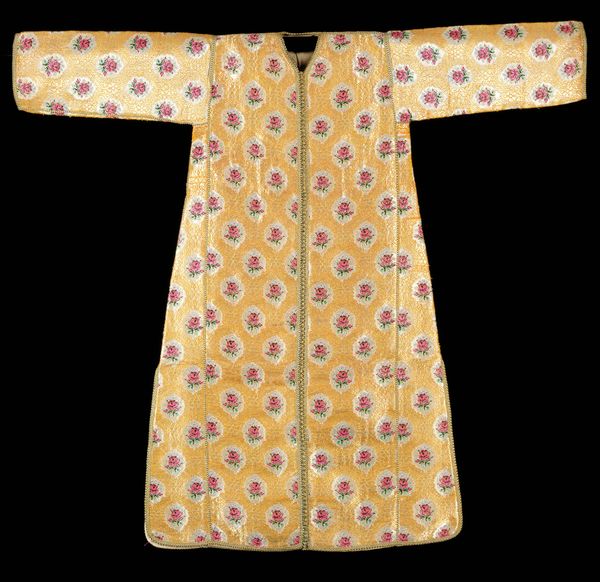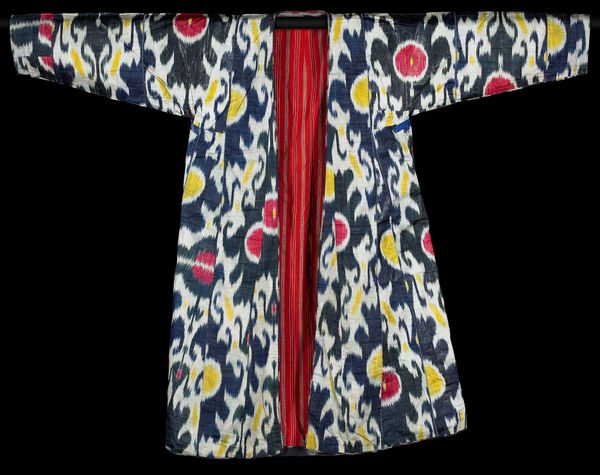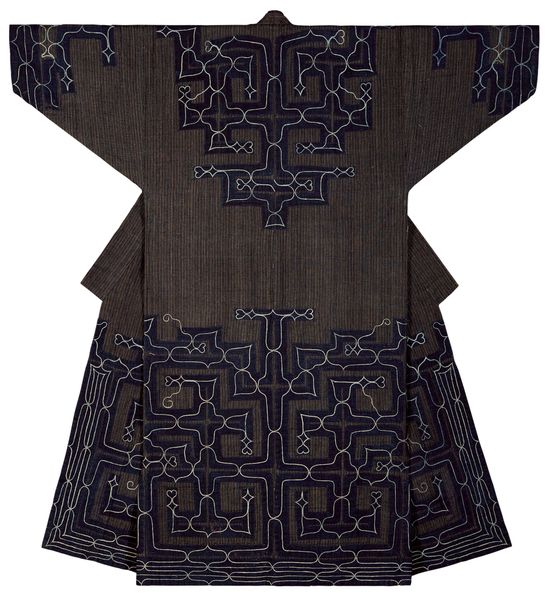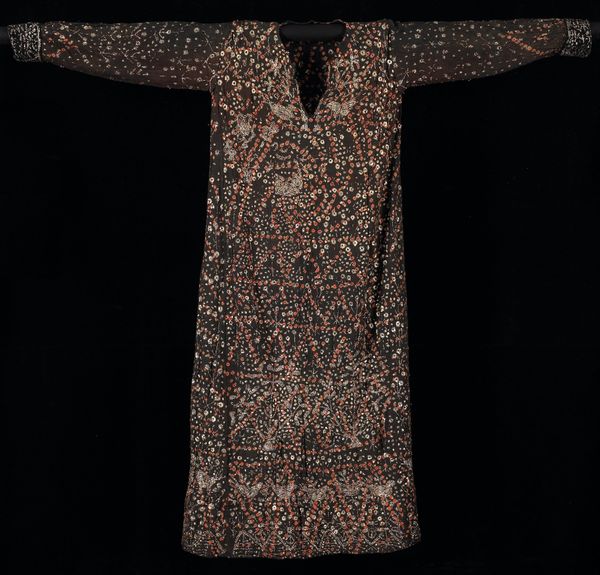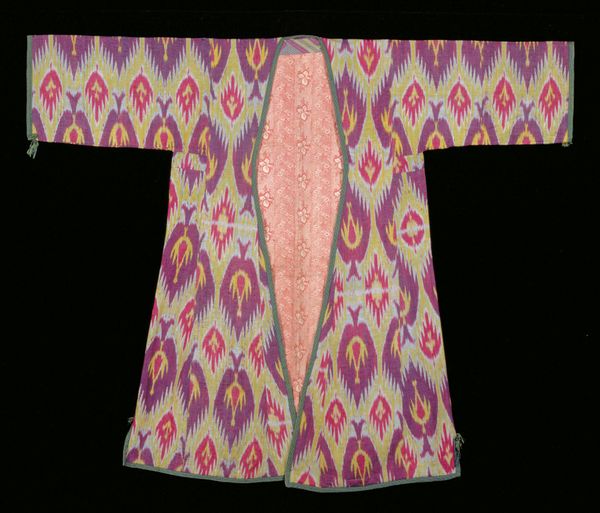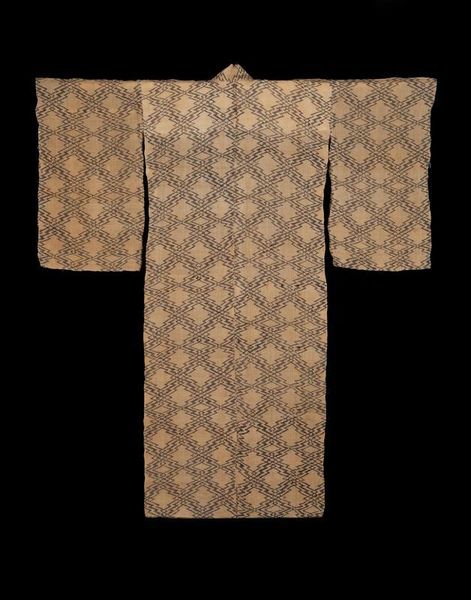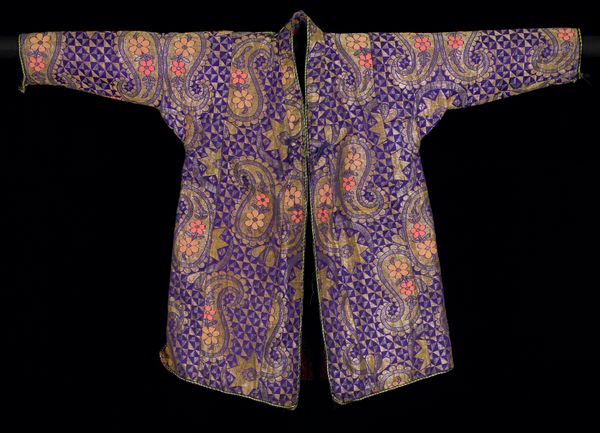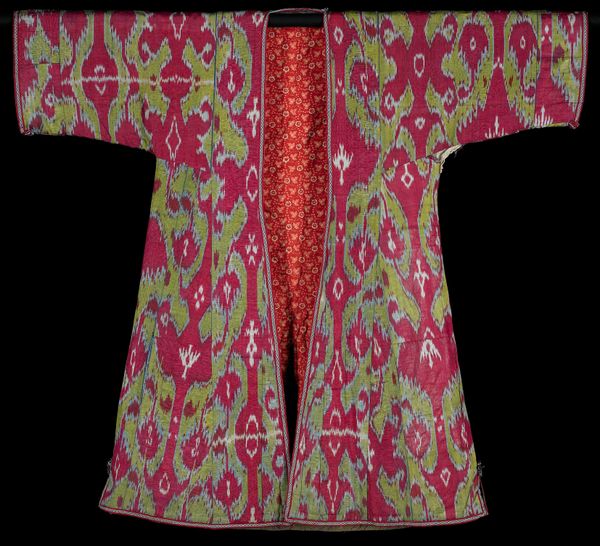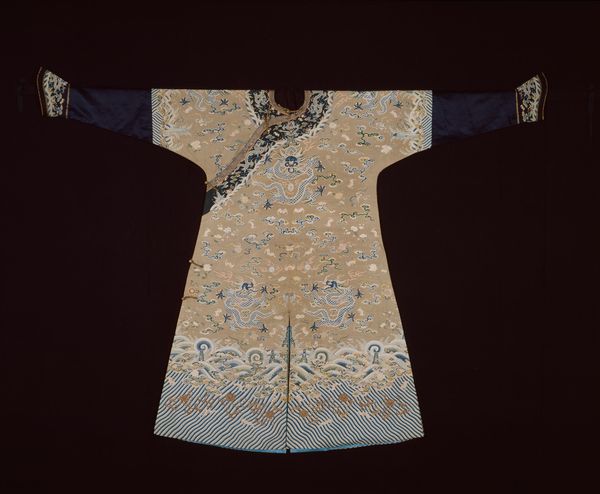
textile
#
textile
#
collage layering style
#
fashion and textile design
#
hand-embroidered
#
fabric design
#
repetition of pattern
#
pattern repetition
#
textile design
#
beaded
#
imprinted textile
#
layered pattern
Dimensions: 58 1/2 x 63 1/4 in. (148.59 x 160.66 cm) (including sleeve length)
Copyright: Public Domain
Editor: Here we have "Caftan," likely created between 1960 and 1970 by an anonymous artist. It's a mixed-media textile piece currently residing here at the Minneapolis Institute of Art. The detail is stunning; I’m struck by the layered patterns. How do we even begin to interpret such an object, historically speaking? Curator: Well, let's think about the caftan itself. Historically, it's been a garment of status and cultural significance across various societies in the Middle East, North Africa, and even Eastern Europe. This piece, though, places it firmly within the burgeoning global exchange of the mid-20th century. How might Western fashion trends have appropriated and reinterpreted these garments? Editor: So, not necessarily authentic in the sense of traditional craft, but more of an interpretation... What does it mean when Western designers borrow motifs and styles like this? Curator: Precisely. It raises questions of cultural appropriation, the exoticization of Eastern cultures, and the evolving role of textiles in expressing identity. Consider how the Pattern and Decoration movement embraced such "decorative" forms – often deemed 'lesser' than painting or sculpture by the art establishment. How does this caftan fit into that shift in artistic values? Editor: That makes me think about accessibility. Suddenly, patterns once confined to specific cultural garments are democratized, almost like a pop art approach to global textiles. Was this garment meant to be worn or viewed primarily as an art piece? Curator: That’s an intriguing point. Was it designed for a gallery, a wealthy client’s closet, or something in between? The context would dramatically shift its meaning. Considering the art world's growing interest in textiles at that time, it's possible this caftan bridges both worlds, questioning the very definition of art and its relationship to everyday life. Editor: I never would have thought about all those power dynamics woven into one garment. Thanks, I learned a lot today. Curator: And I appreciated your fresh insights. It’s through these layered questions that we truly begin to understand art’s place in shaping our world.
Comments
No comments
Be the first to comment and join the conversation on the ultimate creative platform.

